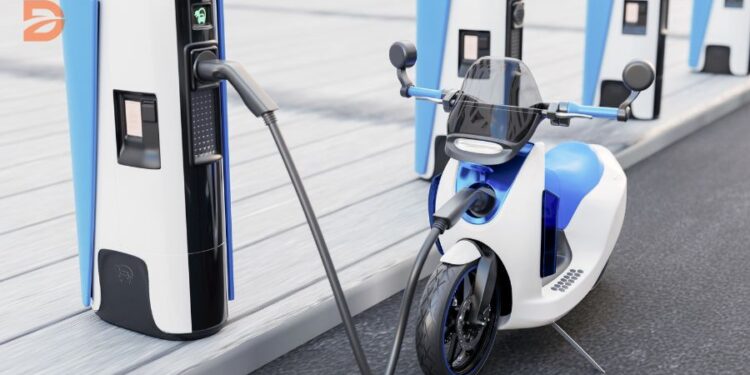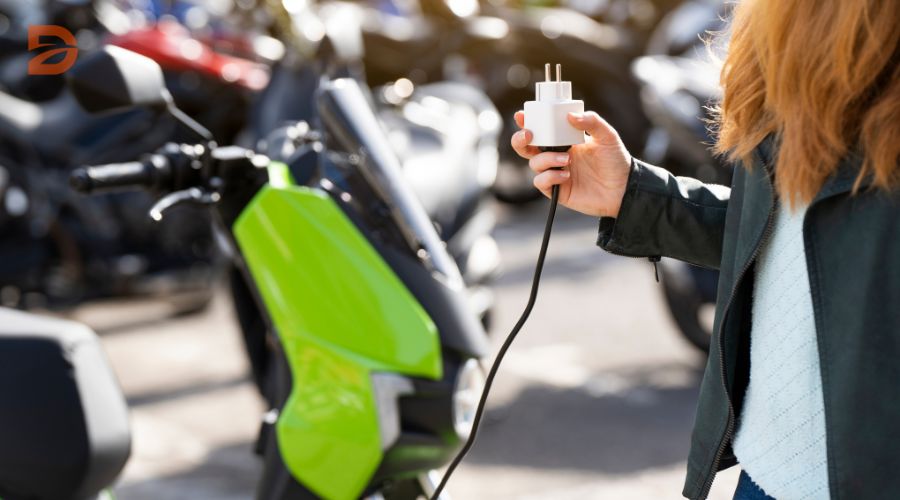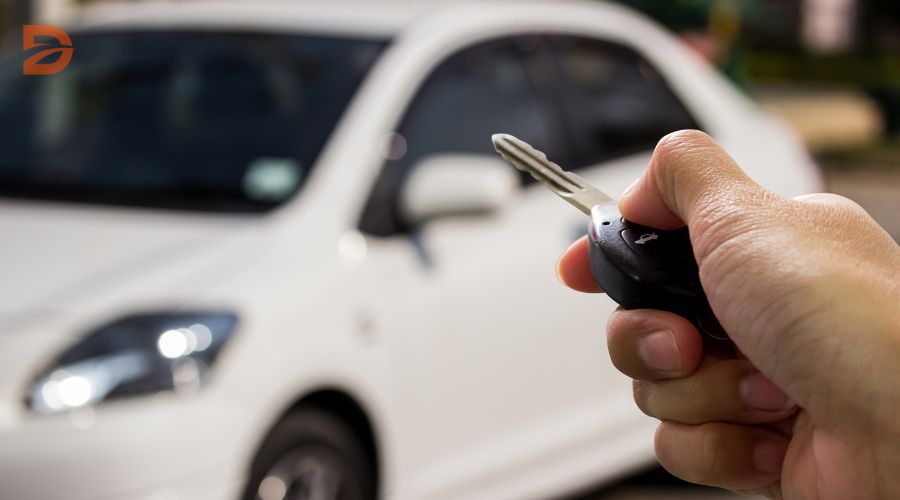Electric motorcycles are quietly revolutionizing the world of two-wheeled transportation. With impressive torque, advanced performance technology, and a significant reduction in maintenance requirements, these eco-friendly machines are garnering attention worldwide. However, as with any new technology, there are valid concerns surrounding their initial costs, battery considerations, and limited model options. Before jumping on the electric motorcycle bandwagon, it’s crucial to weigh the pros and cons to determine if they truly live up to the hype.
Key Takeaways
- Electric motorcycles offer instant torque and high-performance acceleration, with some models reaching 0-60 mph in under 2.7 seconds.
- Reduced vibration and advanced technologies like adjustable handlebars and footpegs enhance rider comfort and ergonomics.
- Electric motorcycles require much less maintenance compared to gas-powered models, as they lack components like pistons, valves, and carburetors.
- Quieter operation contributes to reduced noise pollution, making electric motorcycles an attractive option for urban environments.
- The initial purchase price of electric motorcycles is generally higher, and battery replacements can be costly, though long-term fuel and maintenance savings may offset these costs.
Electrifying Performance: The Torque Advantage
If you’ve never ridden an electric bike, you’re in for a fun surprise. These bikes are tuned for performance with a surprising torquey feel. Twist the throttle, and you’ll feel the adrenaline-pumping pull. For many, this feeling of harnessed power is what people love about motorcycles. Don’t be fooled by smaller electric motorcycles; they can be tuned for more torque than a similarly powered internal combustion engine (ICE) motorcycle.
Impressive Torque Feel
The KTM Freeride E-XC, for instance, boasts a maximum of 24.5 horsepower and an impressive 31 pound-feet of torque. This instant torque delivery provides a thrilling riding experience, especially in off-road environments. The bike’s lightweight lithium-ion battery can power it for up to 90 minutes, and it can be fully recharged in just 110 minutes.
For younger riders, the KTM SX-E 5 mini bikes offer a beginner-friendly alternative. These electric dirt bikes eliminate the need for shifting gears and using the clutch, making them safer and more accessible for those new to the sport.
Advanced Performance Technology
Performance improvement traditionally required the replacement of mechanical parts and hours spent fine-tuning. The best electric motorcycles change this. With a few finger taps in an app, you can completely transform how your electric sportbike performs. You can adjust things like top speed, throttle response, and traction control, allowing you to instantly change the bike’s performance for the changing riding conditions.
Ongoing developments in electric motorcycle technology, such as the use of axial flux motors, are further enhancing performance. Axial flux motors can increase storage space by 30%, improve overall range by 15%, and achieve 0-50 km/h acceleration in just 3.2 seconds, all while maintaining impressive power and torque output.
| Feature | Benefit |
|---|---|
| Instant Torque Delivery | Thrilling riding experience, especially in off-road environments |
| Adjustable Performance Settings | Customize your bike’s behavior for changing riding conditions |
| Axial Flux Motor Technology | Increased storage space, improved range, and faster acceleration |
Electric motorcycles benefits: Reduced Maintenance and Reliability
One of the standout benefits of electric motorcycles is their substantially reduced maintenance requirements compared to their internal combustion engine (ICE) counterparts. Unlike traditional gas-powered bikes, electric motorcycles are free from the vibration and complexity that plague many conventional models.
No More Vibration
Some enthusiasts may claim to appreciate the distinctive “shake” of a traditional motorcycle engine. However, that vibration can negatively impact both rider comfort and circulation. Electric motorcycles, on the other hand, do not suffer from this issue. The absence of a combustion engine means electric bikes operate with a smooth, almost imperceptible level of vibration, providing a more enjoyable and ergonomic riding experience.
More Reliable
Another key advantage of electric motorcycles is their increased reliability. With fewer parts and components than ICE bikes, there are simply fewer things that can break, malfunction, or stop working altogether. This makes electric motorcycles more dependable and reduces the likelihood of unexpected breakdowns or costly repairs over the bike’s lifetime.
Less Maintenance
The reduction in parts and complexity also translates to significantly lower maintenance requirements for electric motorcycles. Tasks like oil changes, clutch adjustments, transmission servicing, and valve adjustments are entirely eliminated. The only regular maintenance typically required is tire replacement and the occasional headlight bulb change, making electric bikes far more convenient and cost-effective to own and operate.
The Quieter Side of Riding
Depending on who you talk to, a sound reduction could be a pro or a con. Harley is famous for producing motorcycles that you can hear from miles. Owners repeat the praise for the iconic rumble. However, the lack of noise from electric motorcycles can be a benefit, providing a more serene and peaceful riding experience.
For some riders, the roar of a gas-powered engine is an integral part of the thrill. They find the absence of engine noise in electric motorcycles to be a drawback, as it takes away from the visceral sensation they’ve grown accustomed to. Owners of Harley-Davidson and other loud bikes often cite the distinctive sound as a key factor in their riding enjoyment.
On the other hand, the quiet operation of electric motorcycles can be a significant advantage for those seeking a more tranquil and eco-friendly riding experience. The near-silent operation allows riders to better hear their surroundings, fostering a more immersive connection with the environment. This can be particularly beneficial in urban areas or densely populated regions where noise pollution is a concern.
“The lack of noise from electric motorcycles can be a benefit, providing a more serene and peaceful riding experience.”
Ultimately, whether the quieter nature of electric motorcycles is a pro or a con comes down to personal preference. Riders who value the aural experience of a powerful engine may find the silence less appealing, while those seeking a more tranquil and environmentally conscious ride will likely appreciate the reduced noise levels.
Initial Costs and Battery Considerations
When it comes to electric motorcycles, one of the biggest hurdles potential buyers face is the initial purchase price. Unfortunately, the best electric motorcycles on the market are priced noticeably higher than their comparable internal combustion engine (ICE) counterparts. As of 2023, it’s rare to find an electric motorcycle for less than $10,000, a price range that may be too steep for a significant segment of riders.
However, it’s important to note that electric bikes do fall within the same price range as high-performance ICE super sports models, and they are more affordable than some full-dresser bikes that can easily exceed $50,000. As innovative battery and motor technology continue to progress, experts anticipate that these new purchase price points will gradually come down, making electric motorcycles more accessible to a wider audience.
Battery Replacements
Another key consideration with electric motorcycles is the battery replacement cost. While the batteries in these vehicles are designed to last five years or more, with manufacturers like Zero Motorcycles offering a five-year warranty, the replacement cost can still be significant when the time comes. Proper care, including following the manufacturer’s guidelines for charging, storage, and operation, can help extend the lifespan of the battery and mitigate the need for premature replacement.
| Metric | Value |
|---|---|
| Average price of electricity in the US | $0.13 per kWh |
| Average price of gasoline in the US | $3.50 per gallon |
| Cost to travel 100 miles on electric | $1.30 (10 kWh) |
| Cost per mile for electric motorcycles | $0.01 |
| Cost per mile for gas-powered motorcycles | $0.09 |
While the initial purchase price of electric motorcycles may be higher, the long-term cost savings in terms of fuel and maintenance can make them a more economical choice for many riders. Additionally, federal tax credits of up to $7,500 for new electric vehicles and $4,000 for pre-owned models can help offset the higher sticker price.
Limited Model Options
As with any new and innovative technology, there are limited models of electric motorcycles available. Each motorcycle manufacturer has their own design team that creates a unique look for its motorcycles. As more manufacturers embrace electric technology, we will see more variety in the designs produced.
In addition, electric motorcycle manufacturers only produce a limited number of models at this stage. We will see more model options as more international motorcycle brands expand their electric lines. Currently, the selection of electric motorcycles is relatively narrow, with most major brands offering only a few models.
This limited availability can be attributed to the inherent challenges of developing and producing new electric powertrain technologies. As the market matures and demand grows, we can expect to see a wider range of electric motorcycle models from various manufacturers catering to different rider preferences and needs.
| Motorcycle Model | Horsepower | Torque (lbs-ft) | Top Speed (mph) | Range (miles) |
|---|---|---|---|---|
| Zero FXE | 46 | 78 | 85 | 100 |
| Energica Experia | 145 | 159 | 125 | 250 |
| Yamaha YZF-R3 | 42 | 21.8 | 112 | N/A |
As the electric motorcycle market continues to evolve, we can expect to see more manufacturers entering the space and introducing a wider array of models. This increased competition will drive innovation, leading to more diverse and capable electric motorcycles to suit the needs of various riders.
Riding Range and Charging Time
When considering an electric motorcycle, the range and charging time are crucial factors to weigh. If you plan to primarily commute to work or ride around town, the range of electric motorcycles may not be a significant concern. However, if you intend to take longer rides that cover great distances, the limited range could become a frustrating limitation.
The maximum range of electric motorcycles is often reduced by various factors, such as higher speeds, additional weight, and extreme temperatures. On average, electric motorcycles can achieve a range of 20 to 100 miles on a single charge, which may not be sufficient for extended journeys. Factors like cold weather can further diminish the battery capacity and shorten the available range.
Charging an electric motorcycle also takes significantly longer than refueling a combustion engine motorcycle. Typical charging times range from 5 to 8 hours, a far cry from the quick pit stops gas-powered bikes enjoy. However, as the technology continues to evolve, faster charging times are expected, with some models already offering rapid charging capabilities that can significantly reduce the time required to replenish the battery.
| Metric | Value |
|---|---|
| Average Range of Electric Motorcycles | 20 – 100 miles |
| Typical Charging Time | 5 – 8 hours |
| Increase in UK Charging Points (June 2022 – June 2023) | 36% |
| Electricity Price Increase in UK (2023) | 17.3% for electricity |
As the electric motorcycle market continues to evolve, manufacturers are working to address these challenges. Improved battery technologies, faster charging capabilities, and the expansion of charging infrastructure are all helping to make electric motorcycles a more viable option for longer-distance riding. However, for now, the range and charging time limitations remain key considerations for those interested in embracing the electric revolution in the two-wheeled world.
Conclusion
Electric motorcycles are slowly but surely making their way into the motorcycle industry. While they offer several benefits, such as impressive torque, reduced maintenance, and environmental advantages, there are also some drawbacks to consider, including higher initial costs, limited model options, and range and charging time constraints. As the technology continues to advance and become more widespread, the pros of electric motorcycles are likely to outweigh the cons for many riders.
For those willing to embrace the future of two-wheeled transportation, electric motorcycles present an exciting and promising option. The emergence of alternative fuels like electricity has the potential to significantly reduce greenhouse gas emissions in the transportation sector, contributing to a more sustainable mobility future. As the electric motorcycle market evolves and becomes more accessible, riders will have the opportunity to enjoy the benefits of zero-emission, cost-effective, and thrilling riding experiences.
While electric motorcycles may not yet offer the same range and charging convenience as their gas-powered counterparts, the industry is rapidly advancing. With continued investment in infrastructure and battery technology, the limitations of electric motorcycles are likely to diminish over time, making them an increasingly attractive choice for a growing number of riders.
FAQ
What are the main benefits of electric motorcycles?
The main benefits of electric motorcycles include impressive torque feel, advanced performance technology, more reliability, reduced maintenance requirements, and minimal noise pollution.
How do electric motorcycles compare to traditional internal combustion engine (ICE) motorcycles in terms of performance?
Electric motorcycles offer a surprising torquey feel and can be tuned for impressive performance. They utilize advanced performance technology that allows riders to instantly adjust settings like top speed, throttle response, and traction control.
How do electric motorcycles differ in terms of maintenance and reliability?
Electric motorcycles have fewer parts and components, making them more reliable and requiring less maintenance. There’s no need to worry about oil changes, clutch, transmission, or valve adjustments. The only regular maintenance is replacing tires or headlight bulbs.
What are the drawbacks of electric motorcycles?
The main drawbacks include a higher initial purchase price, concerns about long-term battery reliability, and limited model options. Riders also need to consider the range and charging time limitations compared to traditional motorcycles.
How does the noise level differ between electric and traditional motorcycles?
Electric motorcycles are significantly quieter than traditional motorcycles, which can be seen as either a pro or a con depending on rider preference. The lack of noise provides a more serene and peaceful riding experience.
What about battery replacement costs for electric motorcycles?
While battery replacement can be expensive, most electric motorcycle batteries are designed to last 5+ years. Proper care and following the manufacturer’s guidelines can help extend the battery’s lifespan.
What are the current limitations in model options for electric motorcycles?
As a relatively new technology, there are currently limited model options for electric motorcycles. However, as more manufacturers embrace electric technology, we will see a greater variety of designs and increased model availability.
How do the range and charging times of electric motorcycles compare to traditional motorcycles?
Electric motorcycles generally have a more limited range, especially at higher speeds, and require significantly longer charging times compared to refueling a traditional motorcycle. However, as the technology continues to evolve, faster charging times and increased range are expected.











